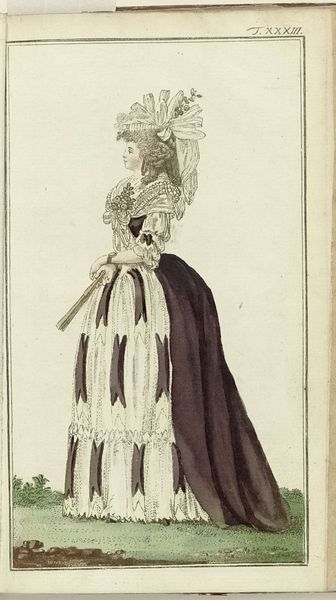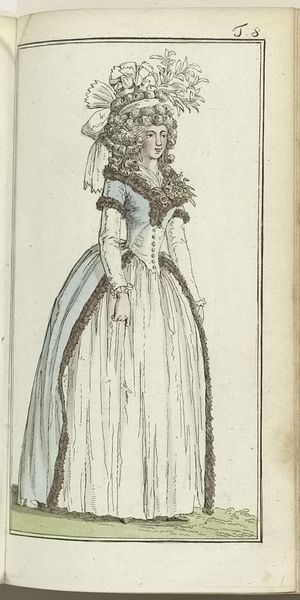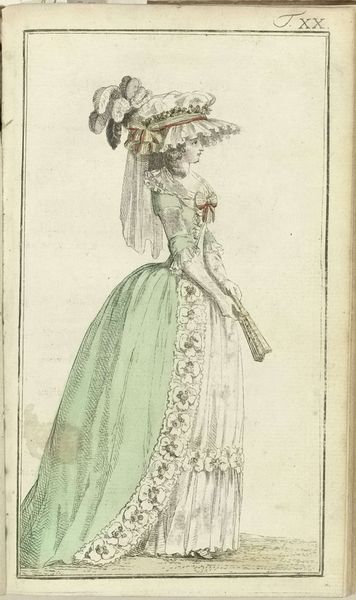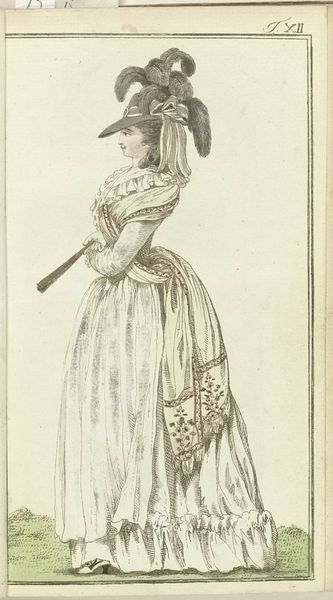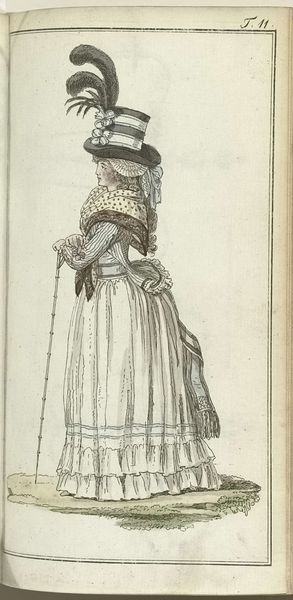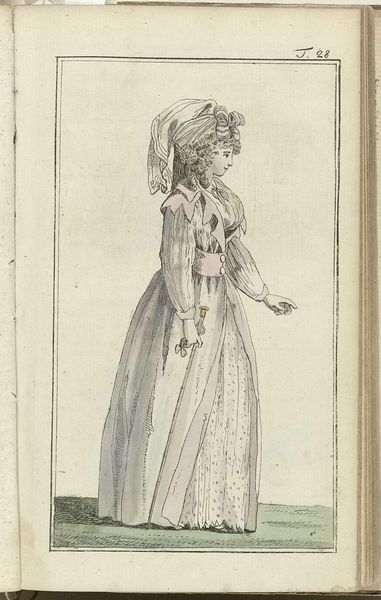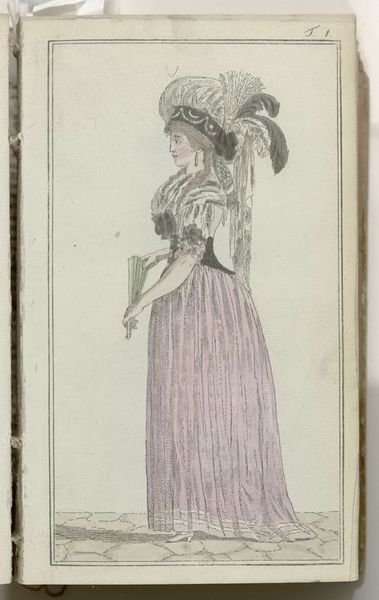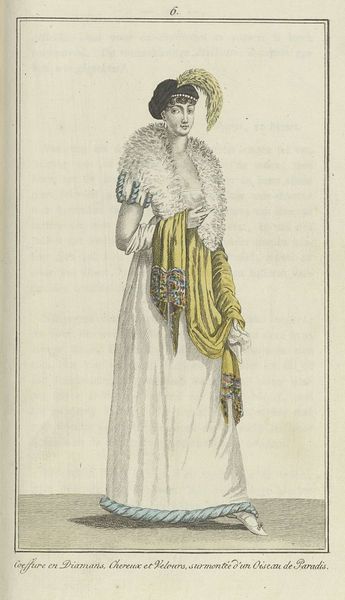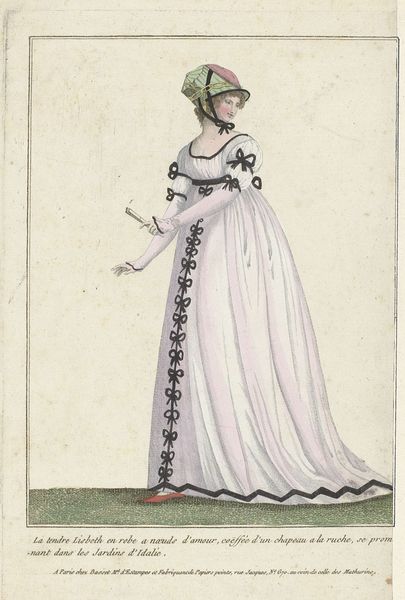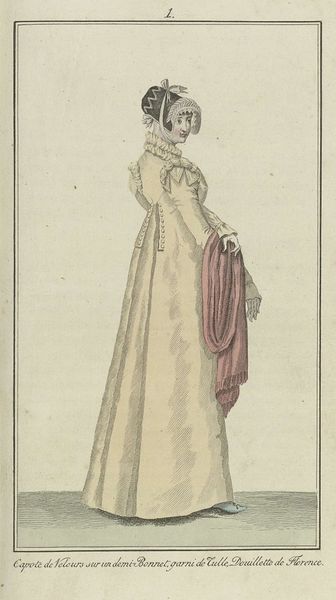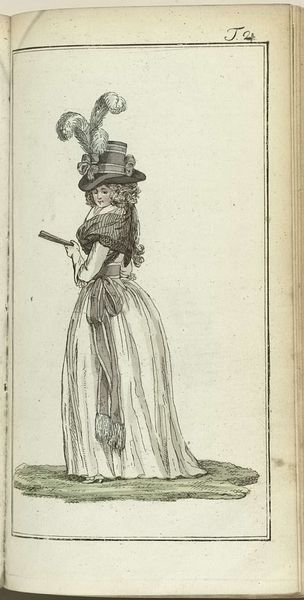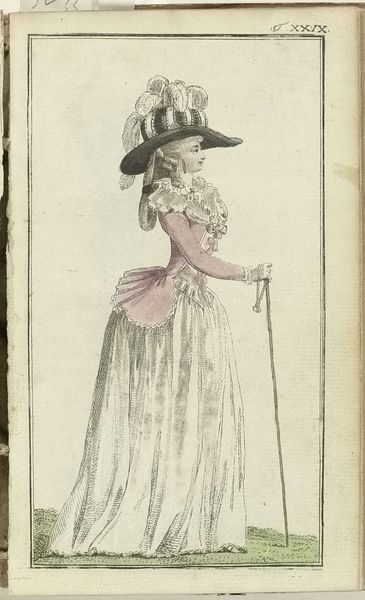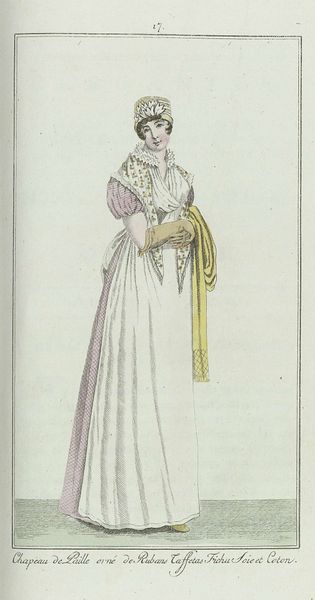
Copyright: Rijks Museum: Open Domain
Curator: Look, there's an ethereal quality to this Rococo engraving. The way light defines the volume in her gown, despite it being a relatively simple etching. Editor: That’s right. This print, entitled "Journal des Luxus und der Moden 1786, Band I, T. 27," originates from 1786 and comes to us from Friedrich Justin Bertuch. It’s a genre scene but serves primarily as a record of fashion during that era. Notice how it appeared in a luxury and fashion journal reflecting and influencing societal tastes. Curator: Indeed, the silhouette itself speaks volumes. The exaggerated hips, tiny waist, and the towering headpiece—almost architectural! There’s a definite sense of artifice, don't you think? The overall effect is light, and the washes add shadow to give dimension in a graceful and playful way. Editor: Playful, perhaps, but also performative. These fashion plates weren’t just about aesthetics; they dictated social standing. Consider how the image of leisure it projects upheld the values of the aristocracy amid growing social inequalities, even if the material processes involved were less painstaking or virtuosic compared to other contemporaneous media. Curator: Yet, one cannot deny the skillful execution. Note the precise lines defining the dress folds, the delicacy of the lace, or the suggestive curve of the body contained in these clothes. Even her small green fan is expertly placed in her hand to invite movement to the overall still rendering of her body. There’s a certain pleasure derived purely from observing the artist's control over the medium. Editor: And this kind of control becomes increasingly important as new visual strategies begin to spread. These visual strategies eventually upend aristocratic society’s values—it's intriguing to view something like this through the lens of power, isn’t it? How art functions within societal frameworks and how images propagate ideas of luxury, propriety, and class distinction. Curator: Definitely. It is a study in contrasts—the rigidity of the social codes and the sheer exuberance of the fashion. I came away appreciating its lightness and skill. Editor: And I found it a potent reminder that fashion, then as now, operated at the crossroads of art, culture, and commerce.
Comments
No comments
Be the first to comment and join the conversation on the ultimate creative platform.
